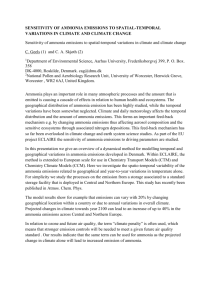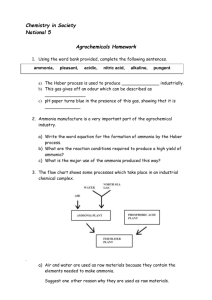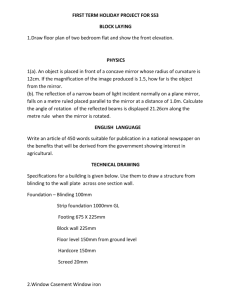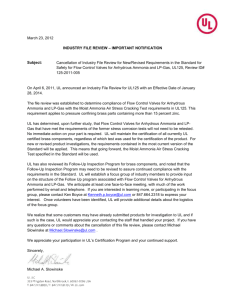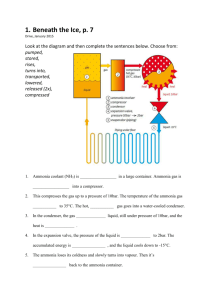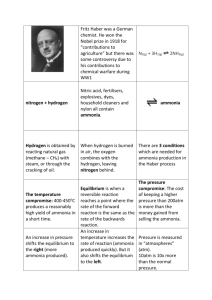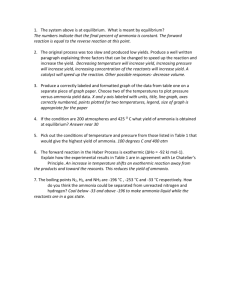UCD 1 - Department of Agriculture
advertisement
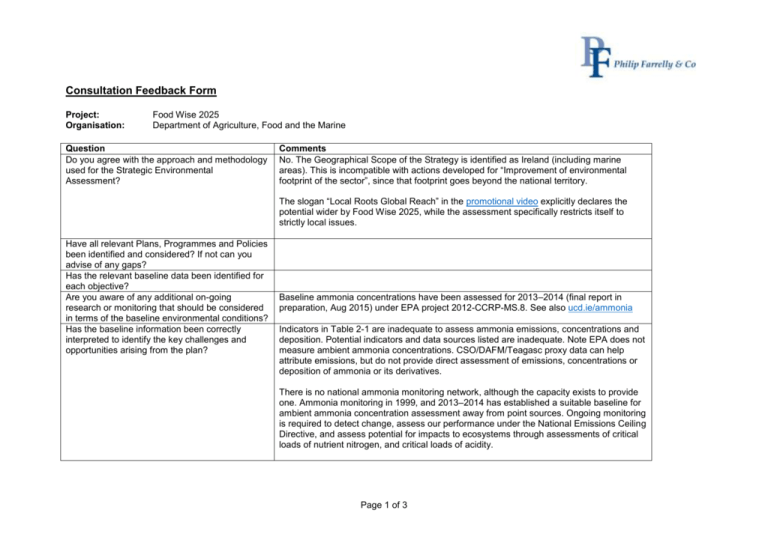
Consultation Feedback Form Project: Organisation: Food Wise 2025 Department of Agriculture, Food and the Marine Question Do you agree with the approach and methodology used for the Strategic Environmental Assessment? Comments No. The Geographical Scope of the Strategy is identified as Ireland (including marine areas). This is incompatible with actions developed for “Improvement of environmental footprint of the sector”, since that footprint goes beyond the national territory. The slogan “Local Roots Global Reach” in the promotional video explicitly declares the potential wider by Food Wise 2025, while the assessment specifically restricts itself to strictly local issues. Have all relevant Plans, Programmes and Policies been identified and considered? If not can you advise of any gaps? Has the relevant baseline data been identified for each objective? Are you aware of any additional on-going research or monitoring that should be considered in terms of the baseline environmental conditions? Has the baseline information been correctly interpreted to identify the key challenges and opportunities arising from the plan? Baseline ammonia concentrations have been assessed for 2013–2014 (final report in preparation, Aug 2015) under EPA project 2012-CCRP-MS.8. See also ucd.ie/ammonia Indicators in Table 2-1 are inadequate to assess ammonia emissions, concentrations and deposition. Potential indicators and data sources listed are inadequate. Note EPA does not measure ambient ammonia concentrations. CSO/DAFM/Teagasc proxy data can help attribute emissions, but do not provide direct assessment of emissions, concentrations or deposition of ammonia or its derivatives. There is no national ammonia monitoring network, although the capacity exists to provide one. Ammonia monitoring in 1999, and 2013–2014 has established a suitable baseline for ambient ammonia concentration assessment away from point sources. Ongoing monitoring is required to detect change, assess our performance under the National Emissions Ceiling Directive, and assess potential for impacts to ecosystems through assessments of critical loads of nutrient nitrogen, and critical loads of acidity. Page 1 of 3 Do the strategic environmental objectives (SEO’s) cover all relevant areas? Do you consider that the alternative strategies outlined are reasonable and have been assessed correctly? Do you think that cumulative and trans-boundary impacts have been assessed fully? With regard to the SEO to manage air pollution, Yes. The target to “Reduce/Minimise emissions of atmospheric pollutants from each sector, with particular regard to ammonia arising from agriculture”, is appropriate. A better target would be to comply with the National Emissions Ceiling Directive. Transboundary impacts of ammonia emissions have not been adequately assessed. Consideration of transboundary impacts has been limited to effects in Northern Ireland. Transboundary impacts of gaseous emissions have not been considered. Do you agree with the assessment outcomes and potential impacts addressed? No. The potential impacts from ammonia emissions are dismissed, on the grounds of claimed mitigation. No specific mitigation is identified in Food Wise 2025; the only related claim is the use of an online nutrient management tool, which is the online version of nutrient-management software already in use. Do you agree with the list of mitigation measures and monitoring proposed? Are there any further measures you consider should be included? Many rows in Table D Mitigation are blank. Therefore no mitigation whaterver is identified in this table for these issues. No mitigation for ammonia emissions is identified in Table D. No monitoring for ammonia emissions, ammonia levels, or ammonia deposition to ecosystems is indicated in Table E. Ammonia monitoring is essential to identify the status and trends in emissions. The SEA claims several times that Food Wise 2025 “suggests measures for limiting GHG emissions and ammonia”, so that no transboundary impact is expected. Actions relating to ammonia emissions as proposed in Food Wise 2025 are: Teagasc to develop and rollout a Nutrient Management software tool to enhance cost-effective use of feed, fertiliser and slurry to minimise nitrogen (nitrate, ammonia and nitrous oxide) and phosphorus losses. Agri-food research funding to prioritise research which … develops and assesses Page 2 of 3 existing and emerging technologies for reducing ammonia and GHG emissions and carbon sequestration in Ireland’s soils, biomass and agricultural systems. Agri-food research funding to prioritise research which … Informs a policy review to be initiated on the effects of ammonia restrictions on future increases in livestock numbers and on the demography within the national herd. These do not provide mitigation of ammonia emissions beyond what is currently done. Monitoring of ammonia emissions, ammonia levels, and ammonia deposition are warranted in view of the imminent breach of Ireland’s National Emission Ceiling Directive limit for ammonia emissions, as expected under Food Harvest 2020 and Food Wise 2025 predictions for growth of animal populations. Are you aware of any further environmental information that will help to inform the environmental assessment findings? Do you have any other comments you wish to make on the Food Wise 2025 and/or the related SEA Environmental Report and Natura Impact Statement? “The draft Agri-Food Strategy 2025 suggests measures for limiting GHG emissions and ammonia. Therefore no consequent transboundary effect is predicted as a result Agri-Food Strategy 2025.” This is a weak claim; no specific mitigation for ammonia emission is identified that is not already in use. Page 3 of 3

